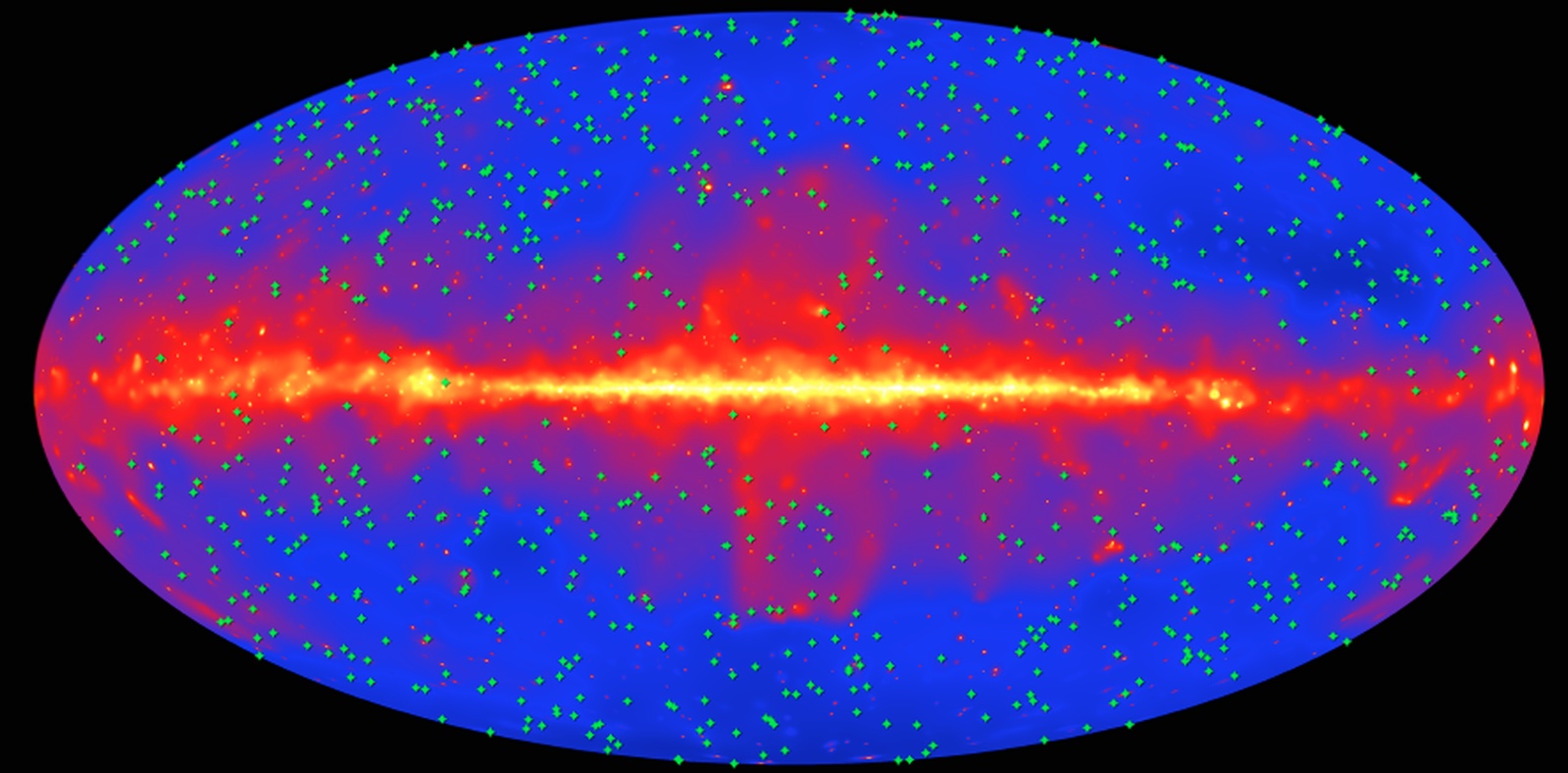Fermi Satellite Team Traces the History of Starlight Across the Cosmic history
In a research, performed by the Fermi LAT collaboration, with participation from Dr. Gabrijela Zaharijas, from the Centre for Astrophysics and Cosmology at the University of Nova Gorica, scientists used gamma rays to measure the total amount of starlight produced over the last 90% of the Universes history (last 12 billion years).

The measurement revealed that the peak period of star formation happened around 10 billion years ago and provided important information about the period when the first stars were born, filling the Universe with their light. A paper describing the new starlight measurement was published in the Nov. 30 edition of Science and is now available online.
Stars create most of the light we see. In addition, all the elements heavier than helium (which is made out of two protons and two neutrons), that we have in the Universe today, were produced in atomic fusion inside the stars. That was noted famously by Carl Sagan who said “Our planet, our society, and we ourselves are built of star stuff.”
It is therefore clear that understanding how the Universe evolved depends in large part on our understanding of how stars evolved. One way to study this is to measure the total amount of cosmic fog composed of the light stars have created over the Universe’s history, the so-called extragalactic background light (EBL).
One of the main goals of the Fermi mission, which celebrated its 10th anniversary in orbit this year, was indeed to assess the extragalactic background light (EBL). Fermi satellite measures gamma-rays (which the highest-energy form of light), coming to us from energetic processes in the Universe. But, how studying gamma rays can tell us about the star-light, which is made of low-energy light, like the one we see with our eyes?
What actually happens is that, when an energetic gamma-rays hit the star-light, the energy released in this collision is in fact enough to create particles! This happens via the Einstein's famous equation, E=mc2, and as a result, a pair of particles, electron and positron (an 'anti-electron') is created. As a consequence, gamma-rays coming from far-away gamma-ray sources effectively dimmen, like fog dulling a car’s headlights.
The Fermi LAT scientists examined gamma-ray signals from 739 blazars — galaxies with monster black holes at their centers (shown with dots in Fig 2), collected over nine years by Fermi’s Large Area Telescope (LAT). From the absorption of the light of these blazars, by the starlight they measured how the EBL changes over time, revealing that the peak period of star formation happened around 10 billion years ago. This measurement also provides important confirmation of previous estimates of star formation from missions that analyze many individual sources in deep galaxy surveys, like the Hubble Space Telescope.
This measurement can also help guide future surveys from missions like the James Webb Space Telescope. One of Webb’s primary objectives is to unravel what happened in the first billion years after the big bang, when the first starts were born. The measurement of the Fermi LAT team limits the amount of starlight we can expect to see in those first billion years and provides a benchmark for future studies.
The next meeting of the Fermi LAT collaboration (which is made by institutions in the USA, France, Germany, Japan, Italy...) will be hosted by the University of Nova Gorica, during the period March 12-15, at Bled. During that time, the Slovenian public will get an opportunity to attend a public talk by a senior Fermi LAT scientists, covering this and other important astrophysics results, at the UNG Lanthieri Mansion in Vipava.
Research of Dr. Gabrijela Zaharijas is co-financed by the Slovenian National Research Agency via research program P1-0031, infrastructure program I0-0033 and research project J1-8136.
Adapted from the http://science.sciencemag.org/lookup/doi/10.1126/science.aat8123
NASA press release, prepared by Jeanette Kazmierczak (NASA’s Goddard Space Flight Center), by A. Gomboc and G. Zaharijas
Link to the paper in Science: http://science.sciencemag.org/lookup/doi/10.1126/science.aat8123
Video: https://youtu.be/V-v0DwNa194 - Gamma rays from distant galaxies called blazars interact with starlight as they travel across the universe. As shown in this video, those reaching the Fermi Gamma-ray Space Telescope can help scientists learn about the history of star formation throughout the cosmos. Credit: NASA’s Goddard Space Flight Center
